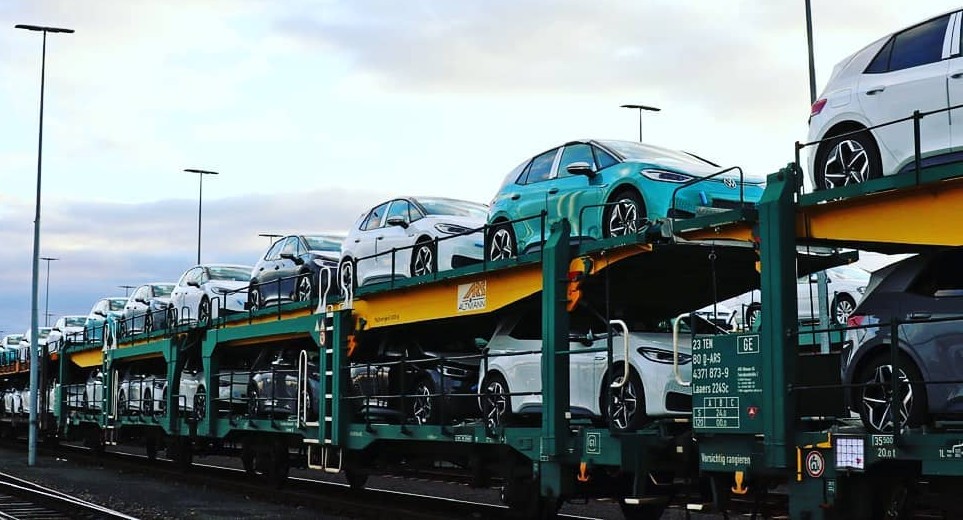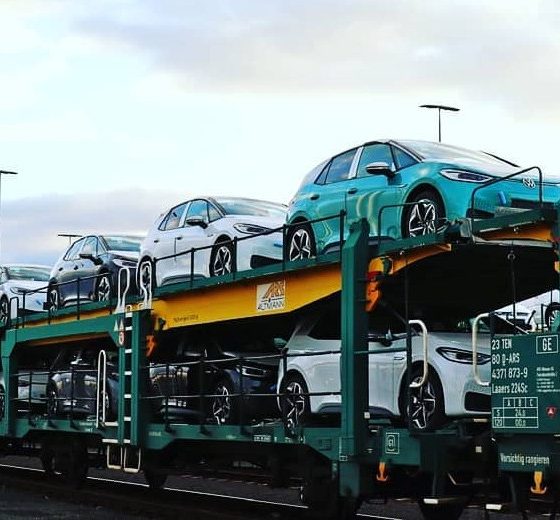

News
Volkswagen, a rocky $50B EV bet, and the bid to chase Tesla’s software prowess
Among the old guard of the automotive industry, very few could hold a candle to Volkswagen, which has initiated a $50 billion bet on electric vehicles. The plan, it seemed, was aimed at ensuring that the veteran automaker could catch up to Tesla, a dedicated EV maker that has made a name for itself by releasing vehicles that receive over-the-air updates on a regular basis.
Yet as the first result of Volkswagen’s dedicated EV efforts, the ID.3, rolled off the assembly line, it became clear that releasing software-driven electric cars was not as simple as building the next iteration of the Golf. When the ID.3 was released, the vehicle was incomplete. It could drive, turn corners, and basically do anything that regular cars are expected to do. Software-wise, however, it was nowhere near done. Features that were promised were absent, and promised capabilities such as over-the-air updates were unavailable.

Even the ID.3’s heads-up display, a feature that is not present in rivals like the Model 3, didn’t function. Early users of the vehicle also reported hundreds of software bugs. By June last year, Volkswagen decided to delay the ID.3’s launch and sell the first batch of the cars without full software. The vehicles are expected to receive an update that would provide the ID.3 with its full feature set, but the initiative will require a service visit around February 2021.
As noted in a report from The Wall Street Journal, Volkswagen’s issues with the ID.3 were the result of the veteran automaker not being proficient in software. For years, industry analysts and leaders alike have suggested and peddled the “Tesla Killer” narrative, suggesting that once the big players of the auto industry get serious about electric vehicles, Elon Musk’s EV startup would be completely overrun. As it turned out, building electric cars was not as simple. Just because a company can produce good gas and diesel-powered cars does not mean that they can produce good EVs.
Karsten Michels, a senior engineer for Continental AG, one of the firms which Volkswagen tapped to develop the ID.3’s software, noted that the gravity of the task surrounding the development of custom vehicle software was underestimated. “Maybe we underestimated how much work is involved and how little we could actually rely on existing legacy software,” Michels said.

Peter Rawlinson, CEO of Lucid Motors, expressed his thoughts on the situation. “(Ever since Tesla launched its first car in 2008) there was this feeling that the really serious players are going to come. Now, the Germans have finally come, and they’re not as good as Tesla,” he remarked.
Volkswagen, for its part, seems to be taking the lessons it learned during the ID.3 rollout and is applying it for the release of the ID.4, a crossover SUV that could rival the Tesla Model Y. Herbert Diess, the Chairman of the Board of Management of Volkswagen Group and an executive who has struck a friendship of sorts with Tesla CEO Elon Musk, initiated efforts to overhaul the company’s software strategies. If successful, the ID.4, which will be produced in Europe, China, and the United States, would deliver on the promises set forth by the ID.3.
Ultimately, Volkswagen has learned a notable yet painful lesson during the ramp of the ID.3, the most notable of which is that software is something that legacy automakers still need to work on. Granted, software has been running in gas-powered cars for years, with average vehicles including dozens of parts with chips that are designed to perform specific tasks. EVs, however, require a different type of software, one that is more akin to those used by smartphones today. With electric cars, in-vehicle software becomes the heart of the vehicle, with updates becoming the equivalent of service visits in a gas-powered car. In-vehicle software today is never complete as well, as they must always be open to improvements.
Danny Shapiro, senior director of automotive at Nvidia, related his thoughts on the complexity of in-vehicle software. “The key here is taking this distributed system in the car, dozens if not hundreds of applications, and centralizing everything. This is very complex, especially with a car where the safety level is critical. You can’t just flip a switch and be a software company,” he noted.
Don’t hesitate to contact us for news tips. Just send a message to tips@teslarati.com to give us a heads up

News
Tesla starts showing how FSD will change lives in Europe
Local officials tested the system on narrow country roads and were impressed by FSD’s smooth, human-like driving, with some calling the service a game-changer for everyday life in areas that are far from urban centers.

Tesla has launched Europe’s first public shuttle service using Full Self-Driving (Supervised) in the rural Eifelkreis Bitburg-Prüm region of Germany, demonstrating how the technology can restore independence and mobility for people who struggle with limited transport options.
Local officials tested the system on narrow country roads and were impressed by FSD’s smooth, human-like driving, with some calling the service a game-changer for everyday life in areas that are far from urban centers.
Officials see real impact on rural residents
Arzfeld Mayor Johannes Kuhl and District Administrator Andreas Kruppert personally tested the Tesla shuttle service. This allowed them to see just how well FSD navigated winding lanes and rural roads confidently. Kruppert said, “Autonomous driving sounds like science fiction to many, but we simply see here that it works totally well in rural regions too.” Kuhl, for his part, also noted that FSD “feels like a very experienced driver.”
The pilot complements the area’s “Citizen Bus” program, which provides on-demand rides for elderly residents who can no longer drive themselves. Tesla Europe shared a video of a demonstration of the service, highlighting how FSD gives people their freedom back, even in places where public transport is not as prevalent.
What the Ministry for Economic Affairs and Transport says
Rhineland-Palatinate’s Minister Daniela Schmitt supported the project, praising the collaboration that made this “first of its kind in Europe” possible. As per the ministry, the rural rollout for the service shows FSD’s potential beyond major cities, and it delivers tangible benefits like grocery runs, doctor visits, and social connections for isolated residents.
“Reliable and flexible mobility is especially vital in rural areas. With the launch of a shuttle service using self-driving vehicles (FSD supervised) by Tesla in the Eifelkreis Bitburg-Prüm, an innovative pilot project is now getting underway that complements local community bus services. It is the first project of its kind in Europe.
“The result is a real gain for rural mobility: greater accessibility, more flexibility and tangible benefits for everyday life. A strong signal for innovation, cooperation and future-oriented mobility beyond urban centers,” the ministry wrote in a LinkedIn post.
News
Tesla China quietly posts Robotaxi-related job listing
Tesla China is currently seeking a Low Voltage Electrical Engineer to work on circuit board design for the company’s autonomous vehicles.

Tesla has posted a new job listing in Shanghai explicitly tied to its Robotaxi program, fueling speculation that the company is preparing to launch its dedicated autonomous ride-hailing service in China.
As noted in the listing, Tesla China is currently seeking a Low Voltage Electrical Engineer to work on circuit board design for the company’s autonomous vehicles.
Robotaxi-specific role
The listing, which was shared on social media platform X by industry watcher @tslaming, suggested that Tesla China is looking to fill the role urgently. The job listing itself specifically mentions that the person hired for the role will be working on the Low Voltage Hardware team, which would design the circuit boards that would serve as the nervous system of the Robotaxi.
Key tasks for the role, as indicated in the job listing, include collaboration with PCB layout, firmware, mechanical, program management, and validation teams, among other responsibilities. The role is based in Shanghai.
China Robotaxi launch
China represents a massive potential market for robotaxis, with its dense urban centers and supportive policies in select cities. Tesla has limited permission to roll out FSD in the country, though despite this, its vehicles have been hailed as among the best in the market when it comes to autonomous features. So far, at least, it appears that China supports Tesla’s FSD and Robotaxi rollout.
This was hinted at in November, when Tesla brought the Cybercab to the 8th China International Import Expo (CIIE) in Shanghai, marking the first time that the autonomous two-seater was brought to the Asia-Pacific region. The vehicle, despite not having a release date in China, received a significant amount of interest among the event’s attendees.
Elon Musk
Elon Musk and Tesla AI Director share insights after empty driver seat Robotaxi rides
The executives’ unoccupied tests hint at the rapid progress of Tesla’s unsupervised Robotaxi efforts.

Tesla CEO Elon Musk and AI Director Ashok Elluswamy celebrated Christmas Eve by sharing personal experiences with Robotaxi vehicles that had no safety monitor or occupant in the driver’s seat. Musk described the system’s “perfect driving” around Austin, while Elluswamy posted video from the back seat, calling it “an amazing experience.”
The executives’ unoccupied tests hint at the rapid progress of Tesla’s unsupervised Robotaxi efforts.
Elon and Ashok’s firsthand Robotaxi insights
Prior to Musk and the Tesla AI Director’s posts, sightings of unmanned Teslas navigating public roads were widely shared on social media. One such vehicle was spotted in Austin, Texas, which Elon Musk acknowleged by stating that “Testing is underway with no occupants in the car.”
Based on his Christmas Eve post, Musk seemed to have tested an unmanned Tesla himself. “A Tesla with no safety monitor in the car and me sitting in the passenger seat took me all around Austin on Sunday with perfect driving,” Musk wrote in his post.
Elluswamy responded with a 2-minute video showing himself in the rear of an unmanned Tesla. The video featured the vehicle’s empty front seats, as well as its smooth handling through real-world traffic. He captioned his video with the words, “It’s an amazing experience!”
Towards Unsupervised operations
During an xAI Hackathon earlier this month, Elon Musk mentioned that Tesla owed be removing Safety Monitors from its Robotaxis in Austin in just three weeks. “Unsupervised is pretty much solved at this point. So there will be Tesla Robotaxis operating in Austin with no one in them. Not even anyone in the passenger seat in about three weeks,” he said. Musk echoed similar estimates at the 2025 Annual Shareholder Meeting and the Q3 2025 earnings call.
Considering the insights that were posted Musk and Elluswamy, it does appear that Tesla is working hard towards operating its Robotaxis with no safety monitors. This is quite impressive considering that the service was launched just earlier this year.








